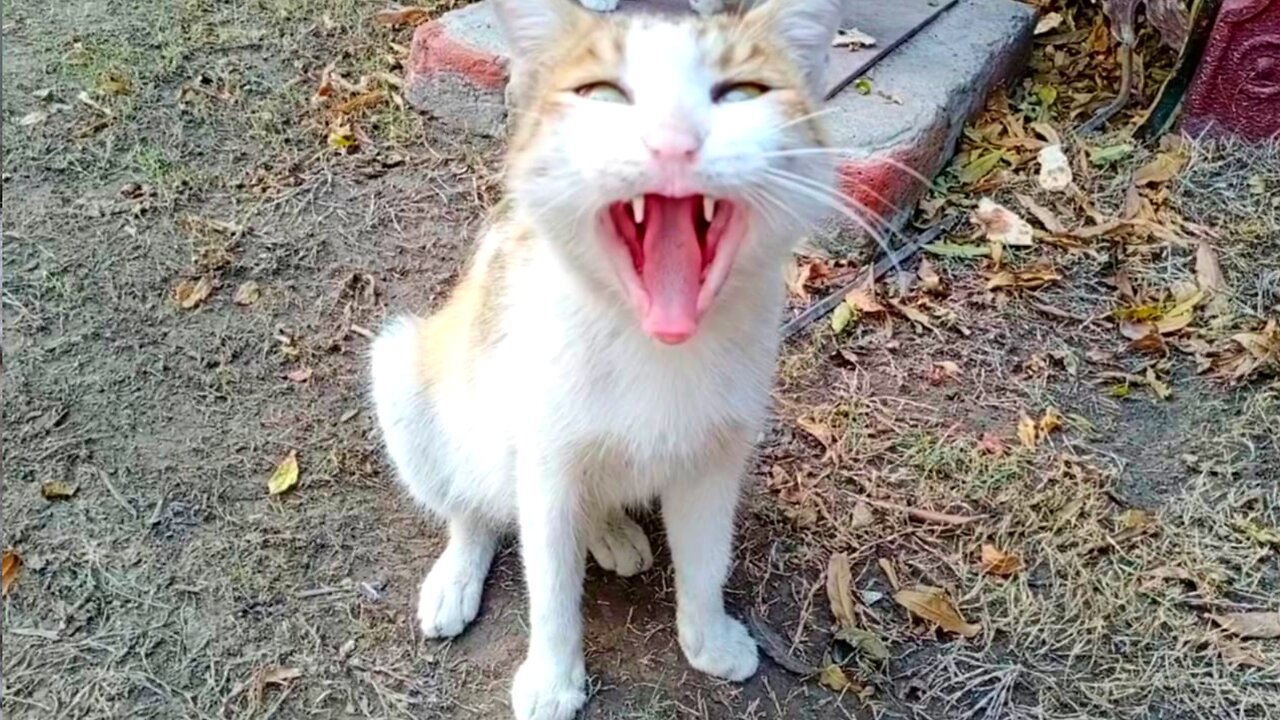Premium Only Content

Cat meow sound effect | Cat meowing | Cat Sounds
at meowing sound effects , cat crying meow sound effect in high quality audio.
Cat meowing sound effect .All cats make sounds — from meows and purrs to growls and hisses — but some felines are more vocal than others.
Kittens are typically more communicative than older cats, and domestic felines are usually more vocal than feral ones.
There’s even evidence that some breeds are more likely to “talk” than others, including Siamese and Burmese cats. But what sounds a cat makes and how vocal it is varies from feline to feline.
Cats communicate with meows, chirrups, hisses, purrs, chatters and growls, but the onomatopoeic meow is the most common.
Kittens will meow to their mothers, but as they mature, they typically quit using this sound to communicate with other cats. Often, adult domestic cats that meow do so only in the presence of humans. This is likely an extension of the way kittens use their plaintive meows as a signal.
If you have cats, you probably know that not all meows are equal. You might even be able to determine if your cat is happy, angry or demanding food or attention just by listening to the type of meow.
It’s often assumed that cats make this calming sound when they’re happy, but they purr for many other reasons as well. Purring can signal that a cat feels frightened or threatened and research shows it’s also a form of self-healing.
This trilling sound is a cross between a meow and a purr, and many cat owners say their felines use it as a form of greeting.
These rumbling sounds are meant as a warning. They can be a response to humans, animals or other cats, and most felines make the noise out of fear, anger or territoriality.
This stuttering sound has been described as a cross between a meow and a bleat. It’s typically heard when a feline spots something — often a bird or flying insect — that they can’t reach. It could communicate excitement or frustration.
If you have a cat, you can interpret what your pets’ meows and other sounds simply by paying attention. Look to see what physical stimulus your cat could be reacting to, and watch your cat’s body language — especially its ears and tail — to determine what emotion or message the animal is trying to convey.
-
 LIVE
LIVE
GameLeap RAID Shadow Legends
1 hour agoSOULSTONE PULLS, Building He-Man, F2P Account Update! - Raid Shadow Legends
349 watching -
 1:57:44
1:57:44
The Charlie Kirk Show
2 hours agoTrump's Tariff Brilliance + Crushing Lawfare Forever | Sen. Moreno, Habba, O'Keefe | 11.26.24
109K32 -
 44:35
44:35
TheAlecLaceShow
2 hours agoTrump Threatens Tariffs on Mexico & Canada | Jack Smith Drops Charges | WW3 | The Alec Lace Show
24.7K4 -
 6:57
6:57
Rethinking the Dollar
17 hours agoCommodities Boom Incoming: Why Gold and Silver Are Leading the Charge
15.4K3 -

Sgtfinesse
3 hours agoSarge's 1st Stream on Rumble
32.1K1 -
 58:23
58:23
The Dan Bongino Show
5 hours agoDemocrats Enter Full Panic Mode (Ep. 2378) - 11/26/2024
667K1.58K -
 58:04
58:04
The Rubin Report
3 hours agoCNN Host Gets Visibly Angry as Her Trap for Conservative Backfires in Her Face
62.2K63 -
 1:28:35
1:28:35
Benny Johnson
3 hours ago🚨VICTORY: All Charges Against Trump DROPPED, Time For REVENGE | Mexico, Canada Bend Knee To Trump
80.7K75 -
 2:17:41
2:17:41
Steven Crowder
5 hours agoTired of Winning Yet? Jack Smith Drops Trump Charges and Mexico Bends The Knee!
410K210 -
 2:00:50
2:00:50
LFA TV
16 hours agoNATIONAL SECURITY THREAT! | LIVE FROM AMERICA 11.26.24 11am EST
46.3K23